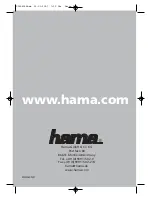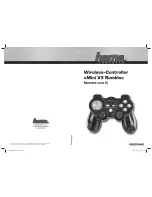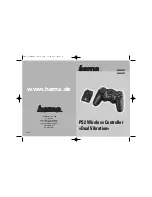
5-336
L90 LINE CURRENT DIFFERENTIAL SYSTEM – INSTRUCTION MANUAL
CONTROL ELEMENTS
CHAPTER 5: SETTINGS
5
The trip output element works in association with other L90 elements that must be programmed and in-service for
successful operation. The necessary elements are: recloser, breaker control, open pole detector, and phase selector. The
recloser must also be in the “Reset” state before a single pole trip can be issued. Outputs from this element are also directly
connected as initiate signals to the breaker failure elements.
At least one internal protection element or digital input representing detection of a fault must be available as an input to
this element. In pilot-aided scheme applications, a timer can be used to delay the output decision until data from a remote
terminal is received from communications facilities, to prevent a three pole operation where a single pole operation is
permitted.
The trip output element is used to aggregate inputs from appropriate protection elements (including 87L line differential,
distance, and instantaneous overcurrent functions) to provide single-pole tripping. The line current differential function is
hard-wired through the 87L TRIP function, which has to be enabled and configured properly.
The 87L TRIP function collects inputs from both the 87L line differential and 87L DTT functions. It can be supervised by the
disturbance detector and determines if the fault type is single-line-to-ground or multi-phase. The 87L TRIP function sends
a direct command to the trip output element to execute appropriate tripping action without any consultation with phase
selector.
Other protective functions, such as distance and overcurrent, need to be assigned to appropriate trip output single pole or
three pole inputs and require phase selector fault identification for tripping action. A timer defined by the
TRIP PILOT
PRIORITY
setting can be used to delay the output decision from other local protection elements to give 87L operational
priority. This prevents three pole operation where a single pole operation is permitted.
The following settings are available for the trip output element.
TRIP MODE
— This setting is used to select the required mode of operation. If selected to “3 Pole Only” outputs for all three
phases are always set simultaneously. If selected to “3 Pole & 1 Pole” outputs for all three phases are set simultaneously
unless the phase selector or a pilot aided scheme determines the fault is single-phase-to-ground. If the fault is identified as
being AG, BG, or CG only, the operands for the faulted phase are asserted.
TRIP 3-POLE INPUT1
to
TRIP 3-POLE INPUT6
— These settings are used to select an operand representing a fault condition
that is not wanted to initiate a single pole operation (for example, phase undervoltage). Use a FlexLogic OR-gate if more
than six inputs are required.
TRIP 1-POLE INPUT1
to
TRIP 1-POLE INPUT6
— These settings are used to select an operand representing a fault condition
that is wanted to initiate a single pole trip-and-reclose if the fault is single phase to ground (for example, distance zone 1).
Use a FlexLogic OR-gate if more than six inputs are required. The inputs do not have to be phase-specific as the phase
selector determines the fault type.
The
AR FORCE 3-P TRIP
operand is asserted by the autorecloser 1.5 cycles after single-pole reclosing is initiated. This operand
calls for a three-pole trip if any protection element configured under
TRIP 1-POLE INPUT
remains picked-up. The open pole
detector provides blocking inputs to distance elements, and therefore the latter resets immediately after the
TRIP 1-POLE
operand asserts. For other protection elements used in single-pole tripping, ensure that they reset immediately after
tripping, otherwise the fact that they are still picked up is detected as an evolving fault and the relay trips three-poles. For
example, if high-set phase instantaneous overcurrent is used (
TRIP 1-POLE INPUT X
: “PHASE IOC1 OP”), then
OPEN POLE OP
Φ
A
is used for blocking phase A of the instantaneous overcurrent element. In this way, after tripping phase A, the phase a
instantaneous overcurrent element is forced to reset. Phases B and C are still operational and can detect an evolving fault
as soon as 8 ms after tripping phase A. Neutral and negative-sequence instantaneous overcurrent elements are blocked
from the
OPEN POLE BLK N
operand unless the pickup setting is high enough to prevent pickup during single-pole reclosing.
TRIP RECLOSE INPUT1
to
TRIP RECLOSE INPUT6
— These settings select an operand representing a fault condition that is
wanted to initiate three pole reclosing (for example, phase distance zone 1). Use a FlexLogic OR-gate if more than six
inputs are required. These inputs also include the
TRIP 1-POLE INPUT1
to
TRIP 1-POLE INPUT6
values, which are intended to
To ensure correct operation of the single pole tripping feature, any non-distance protection used for single pole
tripping (such as high-set overcurrent using the instantaneous or directional overcurrent elements) must be
blocked by the
OPEN POLE OP
Φ
A
,
OPEN POLE OP
Φ
B
, or
OPEN POLE OP
Φ
C
operands. For example, instantaneous
overcurrent phase A is blocked by
OPEN POLE OP
Φ
A
operand. This blocking condition is pre-wired for distance
protection.
Содержание L90
Страница 14: ...1 4 L90 LINE CURRENT DIFFERENTIAL SYSTEM INSTRUCTION MANUAL FOR FURTHER ASSISTANCE CHAPTER 1 INTRODUCTION 1 ...
Страница 68: ...2 54 L90 LINE CURRENT DIFFERENTIAL SYSTEM INSTRUCTION MANUAL SPECIFICATIONS CHAPTER 2 PRODUCT DESCRIPTION 2 ...
Страница 136: ...3 68 L90 LINE CURRENT DIFFERENTIAL SYSTEM INSTRUCTION MANUAL CONNECT TO D400 GATEWAY CHAPTER 3 INSTALLATION 3 ...
Страница 224: ...4 88 L90 LINE CURRENT DIFFERENTIAL SYSTEM INSTRUCTION MANUAL FLEXLOGIC DESIGN USING ENGINEER CHAPTER 4 INTERFACES 4 ...
Страница 692: ...6 36 L90 LINE CURRENT DIFFERENTIAL SYSTEM INSTRUCTION MANUAL PRODUCT INFORMATION CHAPTER 6 ACTUAL VALUES 6 ...
Страница 708: ...7 16 L90 LINE CURRENT DIFFERENTIAL SYSTEM INSTRUCTION MANUAL TARGETS MENU CHAPTER 7 COMMANDS AND TARGETS 7 ...
Страница 742: ...9 6 L90 LINE CURRENT DIFFERENTIAL SYSTEM INSTRUCTION MANUAL TESTING CHAPTER 9 COMMISSIONING 9 ...
Страница 804: ...10 62 L90 LINE CURRENT DIFFERENTIAL SYSTEM INSTRUCTION MANUAL FAULT LOCATOR CHAPTER 10 THEORY OF OPERATION 10 ...
Страница 872: ...C 6 L90 LINE CURRENT DIFFERENTIAL SYSTEM INSTRUCTION MANUAL COMMAND LINE INTERFACE APPENDIX C COMMAND LINE INTERFACE C ...
Страница 878: ...D 6 L90 LINE CURRENT DIFFERENTIAL SYSTEM INSTRUCTION MANUAL REVISION HISTORY APPENDIX D MISCELLANEOUS D ...
Страница 882: ...iv L90 LINE CURRENT DIFFERENTIAL SYSTEM INSTRUCTION MANUAL ABBREVIATIONS ...
Страница 900: ...xviii L90 LINE CURRENT DIFFERENTIAL SYSTEM INSTRUCTION MANUAL INDEX ...
















































